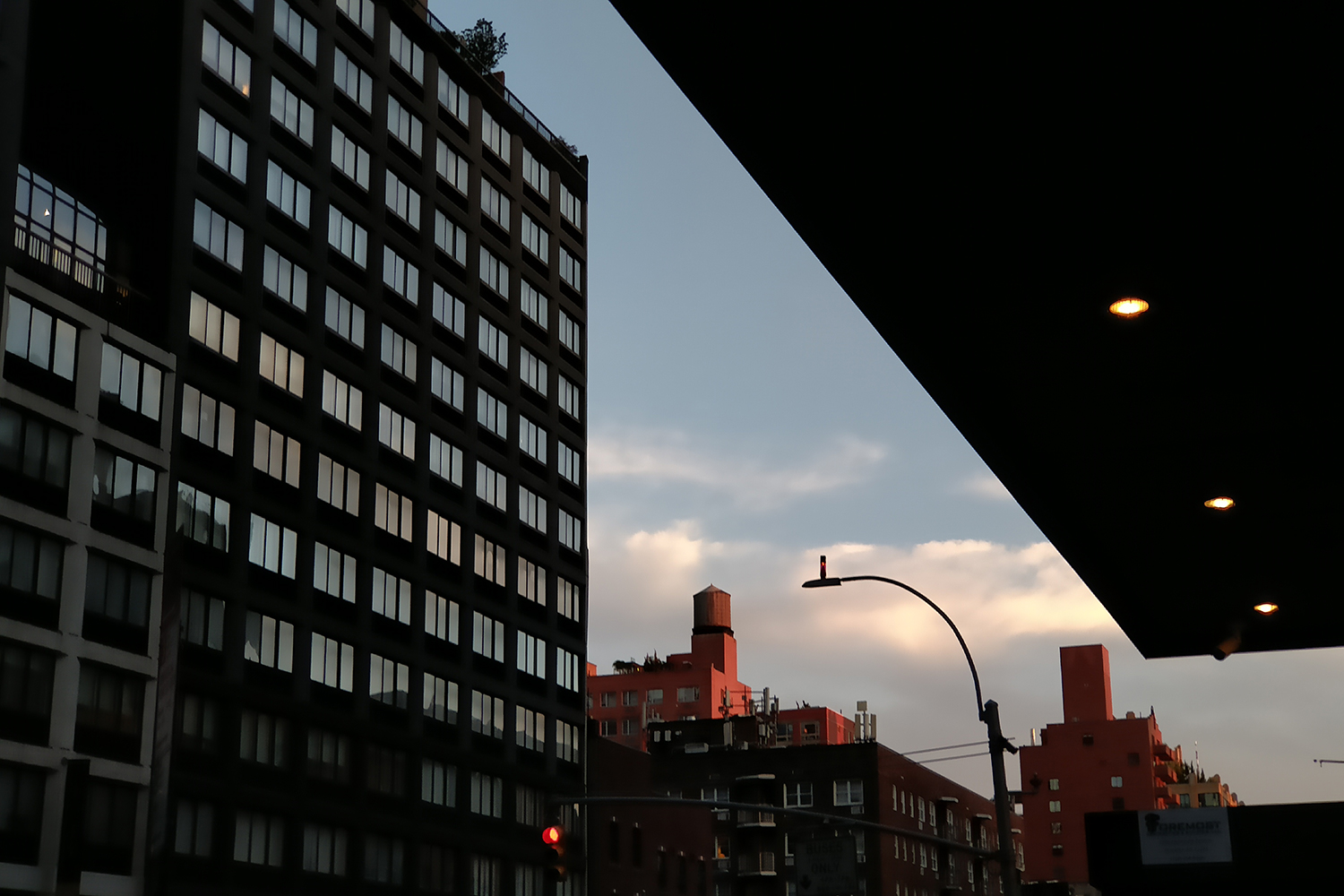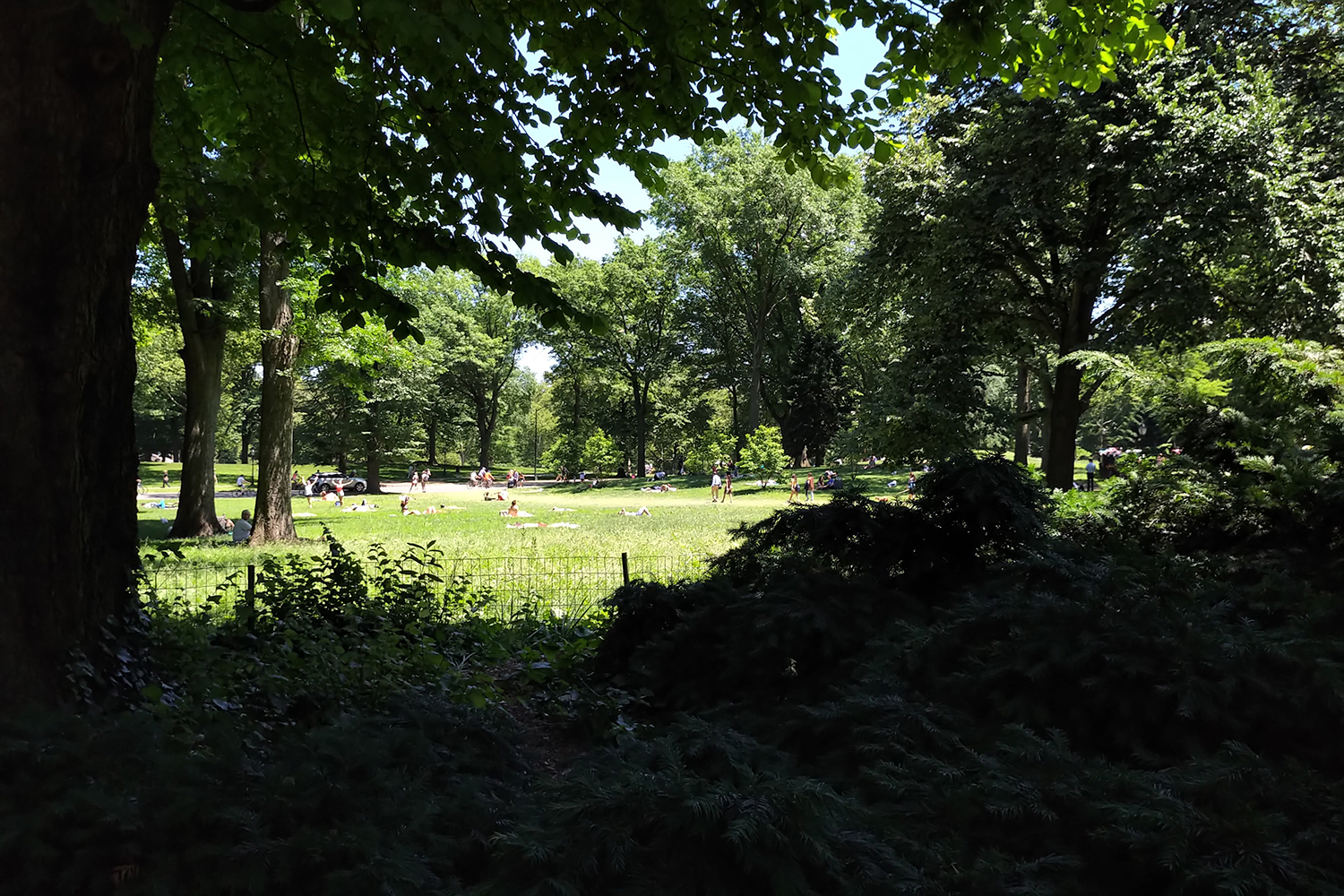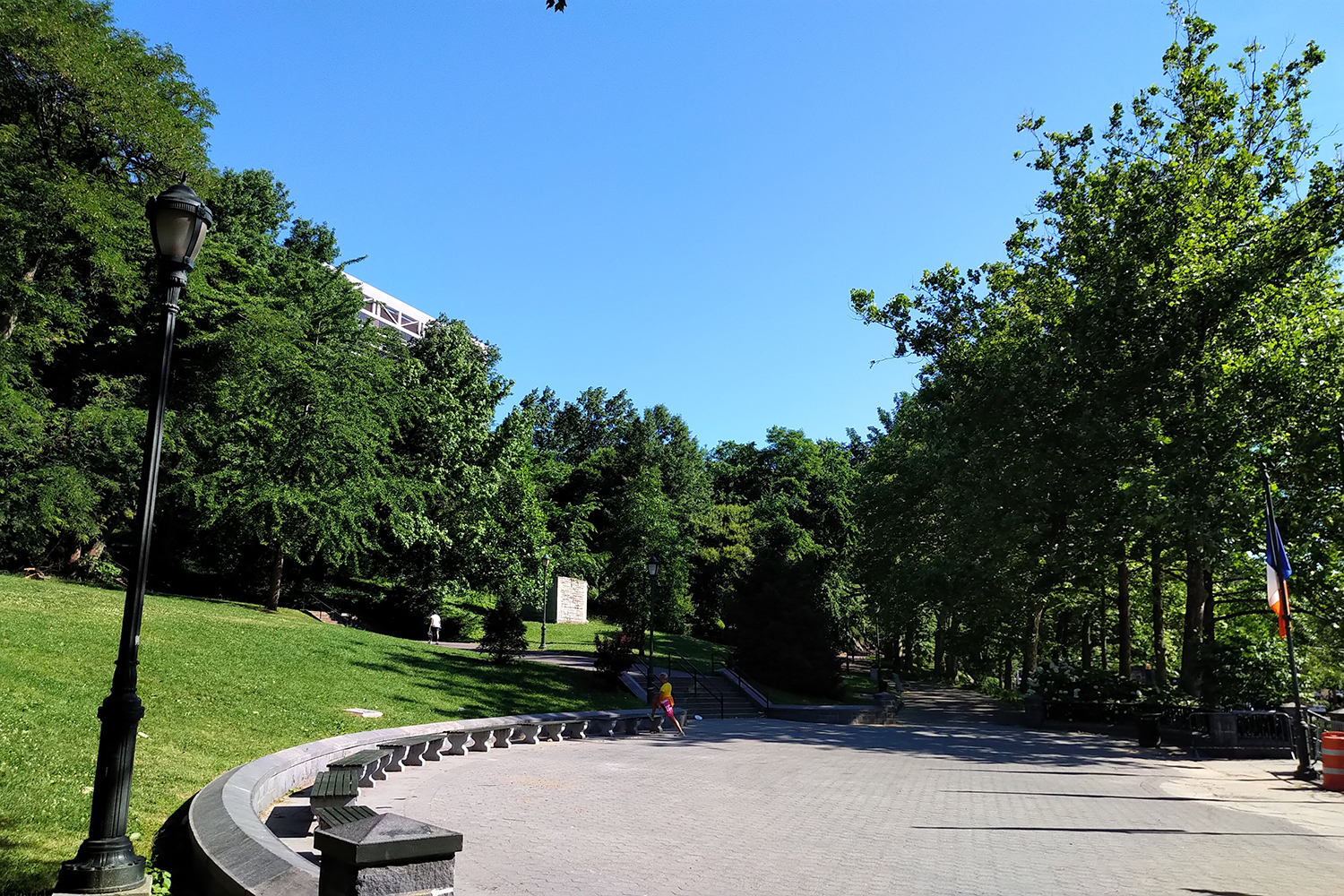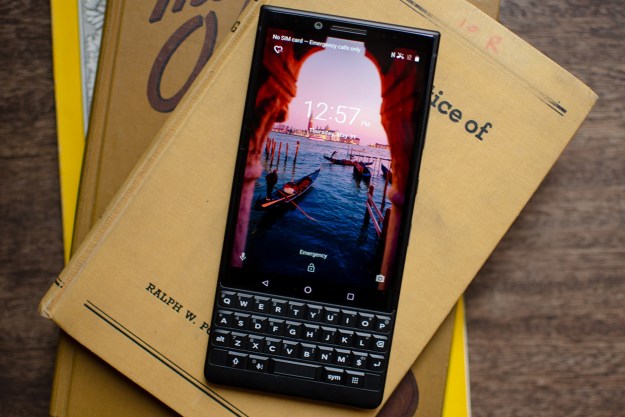
“Stellar battery life, a useful keyboard, and simple software with a focus on security. The BlackBerry Key2 is an exceptional phone. ”
- Excellent keyboard, handy new Speed Key
- Beautiful design
- Great battery life
- Plenty of security and privacy features
- Good Portrait Mode
- Average camera, low-light photos aren't great
- Performance can dip occasionally
- Poor capacitive gestures in keyboard
When BlackBerry launched the KeyOne last year, an Android smartphone with a physical keyboard, it played up nostalgia to win back BlackBerry fans of old. With its successor — the BlackBerry Key2 — the brand has affirmed that physical keyboards do have a place in our current smartphone landscape, and it’s gunning for Samsung and Apple customers. There are good reasons to consider switching: BlackBerry has refined the keyboard, the design, and build quality of the Key2, while also staying true to its promise of security, privacy, and stellar battery life.
To be clear, it’s TCL Communications that makes the devices now and licenses the BlackBerry Mobile brand name, though BlackBerry Limited in Canada still handles the software and security updates.
Elegant and suave
If the Key2 were a person, it would be the dashing CEO to a successful mega-corporation. It redefines suave.
The phone is a little taller than its predecessor, but it’s 1mm thinner, and 12 grams lighter. It’s much more comfortable in the hand and easier to grip, thanks to the flat edges that are also chamfered. The utilitarian design strips away all unnecessary fluff, leaving just the essentials for an elegant look.
The 4.5-inch screen moves up a little, and the bezels surrounding the display have shrunk, giving the Key2 a slightly more contemporary look. You’ll still find capacitive Android navigation controls below the screen, but all the other buttons on the phone are now on the right edge — including the power button and the Convenience Key. The power button is textured, so you’ll know which one you’re about to press, and they’re all easy to access.
At the bottom is a USB Type-C charging port, with speaker grilles surrounding it. The speaker doesn’t get very loud, and music and videos just sound average. It’s easy to block when you hold the phone in landscape mode, which happens often on other phones with bottom-firing speakers as well. Thankfully, there’s a headphone jack and earbuds do come packaged in the box. We are a little perplexed at the placement of the headphone jack, though, because it’s slightly off-center at the top. It looks a little jarring, but it’s the only design flaw we’ve found with the Key2; it’s an otherwise meticulously crafted phone.
If the Key2 were a person, it would be the dashing CEO to a successful megacorporation. It redefines suave.
The back of the phone isn’t too different from the KeyOne. The soft-touch material feels nice to the touch, and best of all, it doesn’t capture grubby fingerprint marks like most glass phones these days. It’ll almost always look presentable. The camera isn’t as big and bold as the KeyOne, and there are two lenses now.
The IPS LCD screen has a 1,620 x 1,080 pixel resolution, with a pixel density of 434 pixels per inch and a 3:2 aspect ratio. The screen looks sharp, colorful, and bright enough to see on a sunny day. Blacks don’t look as rich as we’ve seen on OLED screens, but we don’t have many qualms about the screen here. If you’re looking for a big display so you can watch lots of movies or videos, this may not be the phone for you as the screen might be a tad too small. That being said, Netflix and YouTube look perfectly adequate on the screen and satisfied our binge-watching habits.
The screen is protected by Gorilla Glass 3, which is a bit of a disappointment as most flagship phones use the stronger Gorilla Glass 5. You’ll still want to grab a case. The Key2 is also not water resistant, so you definitely want to keep the keyboard away from any water whatsoever.
The Key2 looks sharp, suave, and elegant. There are two color options: silver and black. We’re torn on which we’d pick, because we love the subtle look of the all-black color; but the silver model really does elevate the minimal design of the Key2. It’s a good problem to have.
The perfect keyboard, and a new key
The Key2, like the KeyOne, is all about the physical keyboard. If it’s not good, then what’s the point? The company told Digital Trends it spent an enormous amount of time playing around with different designs of the keyboard to make sure it’s perfect, and after more than a week of using it as our primary device, we can happily confirm it is. We can’t think of a better word to describe it.
We’ve talked about transitioning from an iPhone X touchscreen keyboard to the BlackBerry KeyOne keyboard — a fun experiment, but our typing speed became a lot slower. With the Key2, moving the screen a little higher means there’s more room at the bottom for a slightly bigger keyboard. The raised frets are gone between the rows of keys, the keys are a tad bigger, and in general, there’s more breathing room.
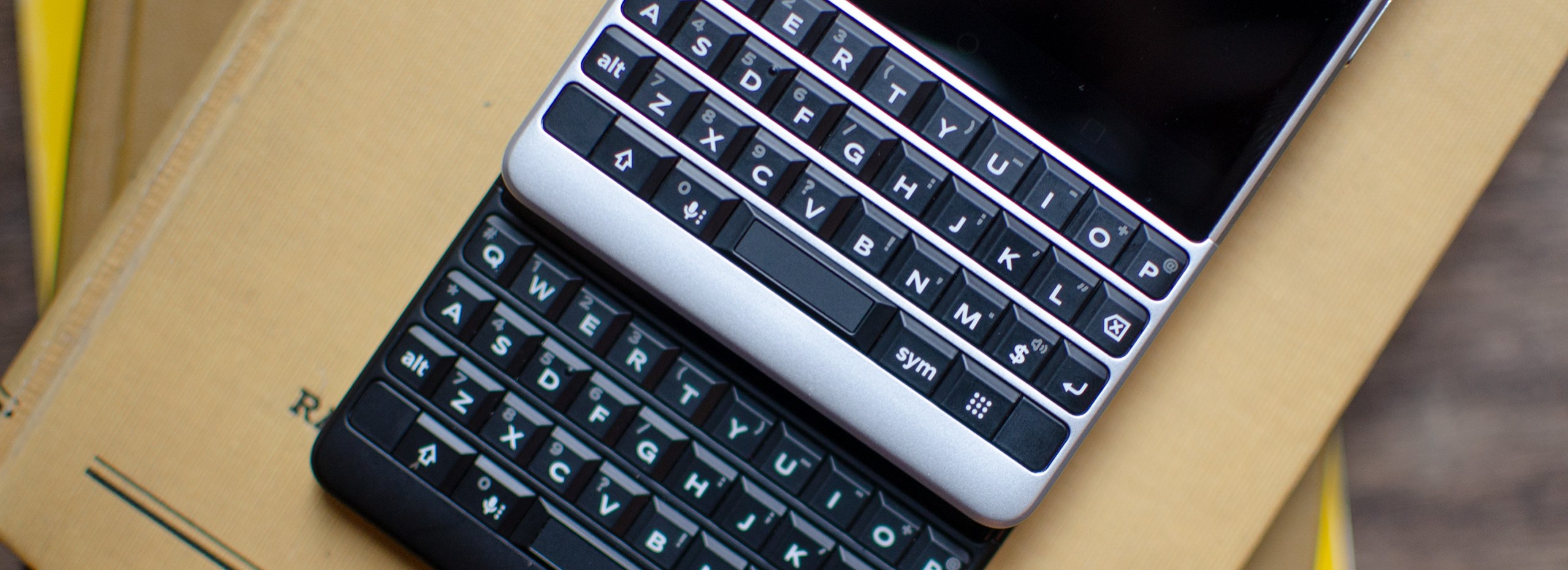
The matte keys slope down a bit, and they deliver a satisfying tactile sensation when pressed — they’re not too mushy, but they’re certainly not stiff. The extra room really does help us type faster. That’s not to mention the fact that the backlit keyboard is still capacitive, meaning you can flick upwards under the predictive word bar to use suggested words quickly for even faster typing. We tended to just tap on the predictive words on the touchscreen rather than flick, though, as it tended to be faster and more comfortable.
The keyboard also doubles as a trackpad, allowing you to scroll through the Android operating system and apps. It doesn’t work as well as we’d like, as scrolling can feel really slow — you’re likely better off using the touchscreen. That being said, each key can be mapped to an app or shortcut twice — a short press and a long press. For example, tap the M key to launch Google Maps, and then press and hold the M key to launch a messaging app. That’s a lot of shortcuts, but we found them easy to remember quickly. This method of accessing apps is so much faster than hunting down in your app drawer or home screen, or even searching for an app.
The matte keys slope down a bit, and they deliver a satisfying tactile sensation when pressed.
But the biggest change to the Key2’s keyboard is the addition of a new key. It’s called the Speed Key, and it replaces the extra shift key that sat on the far right side of the keyboard. If you’re in an app, press and hold the Speed Key, and then short tap or long tap any other key to jump to a remapped app. It’s kind of like alt-tabbing on a computer, but it gets you where you want to go much faster — perfect for multi-taskers. For example, if you’re in Maps, but you want to jump to Photos, press and hold the Speed Key, and then tap the P key (presuming you’ve remapped the P key to Photos). You’ll jump straight into the app, without having to exit Maps, open the app drawer, and find the Photos icon.
The Speed Key is a fantastic and useful addition to the Key2’s keyboard, and it genuinely elevates the multitasking experience more than Android’s native split-screen function.
Do we type faster with a physical keyboard over a touchscreen one? No. After so many years of gesture typing, we’re a good deal faster at typing on a touchscreen phones. We have found ourselves to be a little more accurate on the Key2, though, and the decrease in speed doesn’t stop us from enjoying this keyboard. If the tactile sensation clicks for you, you’ll be smitten with the Key2.
Satisfactory performance
The Key2 is powered by Qualcomm’s Snapdragon 660 processor with 6GB of RAM, and we were able to throw all sorts of tasks at it without much of a problem. You will notice a slight decrease in performance if you’re coming from a flagship phone like the Galaxy S8, S9, iPhone 8 or iPhone X. Apps don’t open as quickly, but moving throughout the operating system still feels fluid. We only noticed dips in performance when we were juggling several tasks at the same time, but even then our experience wasn’t really hampered.
Here are some benchmark results:
- AnTuTu 3DBench: 139,303
- Geekbench 4 CPU: 1,617 single-core; 5,609 multi-core
- 3DMark Sling Shot Extreme: 1,020 (Vulkan)
The Key2’s AnTuTu score is very similar to the Nokia 7 Plus, which has the same processor, and it’s not too far from the Google Pixel 2 (which ran a Snapdragon 835). Games like Retro Racing ran without a hitch, and we think most people won’t have qualms about the Key2’s performance.
There’s 64GB of internal storage in the U.S. model, and a 128GB model will be available in certain markets. There’s a MicroSD card slot too, so you can add more space when you need it.
Secure, useful software
The BlackBerry Key2 runs Android 8.1 Oreo, and BlackBerry said it will get two Android version upgrades. That means it will get Android P, though maybe not immediately after it’s launched, and it will get Android Q in 2019. The software is mostly stock Android, but there are a few changes made by BlackBerry and a whole lot of BlackBerry apps. The most noticeable visual addition is the BlackBerry Productivity Tab, which sticks out on the right edge of the screen — it now lets you add widgets, so you don’t need to swipe through too many home screens.

The apps present on the phone will mostly be familiar for BlackBerry users, but there are a few new ones and big updates to older apps. There’s the BlackBerry Hub, where you can see all your notifications, BBM, BlackBerry Privacy Shade, and Locker. The Locker app now lets you store and hide apps, requiring a passcode or fingerprint activation (via the spacebar key) to open them. Handy if you want to keep a dating app a secret from coworkers, or other sensitive files. Locker also now has the privacy-focused Firefox Focus browser pre-installed, which deletes browsing history as soon as you leave the app. The default browser on the phone is still Chrome.
It’s only 5mAh smaller than the battery on the KeyOne, which could easily stay powered for two days.
Photos taken with the fingerprint sensor are also hidden away in the gallery app, and they’re not uploaded to the Google Photos cloud — another privacy-friendly feature. A new app called Power Center tells you what apps are draining your battery, and it learns your charging habits so it will send an alert when it knows you won’t make it to your typical charging window. The alerts we received from this app were useful, as it accurately determined the time our phone would run out of juice.
BlackBerry said it has employed the use of machine learning throughout the operating system as well. For example, the DTEK app will tell you if there’s an app accessing sensitive information like a microphone, and you can deny the request. This happens after you have agreed to allow the app to access the microphone through Google Play permissions, as an extra security measure. You don’t have to mess about too much with this app, and BlackBerry makes it simple to understand — just make sure your security level says “excellent” and you’re good to go.
The Convenience Key — the physical button below the power button — now has three modes. There’s a Car profile, a Meeting profile, and a Home profile. So if you press the button when the phone is connected to your car’s Bluetooth, then it will present you with three pre-configured apps of your choosing such as Google Maps, or Spotify. The Work profile apps will show up when you’re connected to your work Wi-Fi, and your Home apps will be present on your home Wi-Fi.
There’s so much you can do on the Key2, it can feel overwhelming. But the redesigns make things easier to access, and you never feel like BlackBerry is forcing you to use any of these features. You can even turn many of these extra software flourishes off — like the Productivity Tab — if you don’t want to use them.
Dual camera
Jumping on the dual camera trend, BlackBerry’s Key2 has two 12-megapixel cameras on the back — one with an f/1.8 aperture, and the other with an f/2.6 aperture. There’s 2x optical zoom now, as well as a Portrait Mode.
The shutter can react quickly when you tap it, but we’ve noticed it tends to be a little slow in low-light environments. In good lighting and even medium lighting, photos look relatively well detailed and colorful. White balance does seem to be an issue sometimes, though, as some buildings in our photos end up looking a little too purple instead of off white. And photos do sometimes look a little too sharpened. The Key2 doesn’t also have the best HDR, so some parts of high-contrast photos may sometimes look under or overexposed.
Jumping on the dual camera trend, BlackBerry’s Key2 has two 12-megapixel cameras on the back.
It’s in low-light that the Key2 suffers more. There’s a ton of grain, but our problem is more with shutter lag. Sometimes the shutter stays open for a full second or more after we’ve tapped the shutter icon, and the end result is just a blur that’s completely unusable. It’s not the case all the time, as we have managed to take a few decent photos in low light, but chances are this phone will frustrate in less-than-ideal conditions.
The 2x optical zoom mode can look great in daylight, but details are completely fuzzy in poorer lighting. We’re more surprised at how well Portrait Mode works, though the feature is tricky to find in the camera app at a quick glance. The camera manages to identify the edges of a subject really well, and it applies a good blur to the background, bringing a strong focus to the primary subject.
The Key2 has a solid camera that can take great photos, but you may not want to pull it out when you’re at the club.
Great battery life
The BlackBerry Key2 packs a 3,500mAh battery capacity, which is only 5mAh smaller than the battery on its predecessor. You can say goodbye to battery anxiety with this phone, because you won’t have to charge it every day. The Key2 can easily breeze past one day.
There is no support for wireless charging, but we’re not really missing it because battery life is stellar.
On a work day with heavy use, including video streaming, benchmark testing, picture taking, music streaming, and web browsing, we ended the day at 7 p.m. with around 40 percent remaining. On more moderate days of use, we’ve hit 48 percent at midnight — always after taking off the charger around 7:30 a.m. — and on light days like the weekend when we stayed at home, we found ourselves with 64 percent battery life remaining around 6 p.m.
The Key2 also supports Qualcomm’s Quick Charge 3.0, so it recharges fast. There is no support for wireless charging, but we’re not really missing it because battery life is stellar.
Price, availability, and warranty information
The BlackBerry Key2 costs $650, and it will be available in the U.S. starting on July 13. It will be sold through Amazon and Best Buy, with pre-orders kicking off on June 29, and it will only work on GSM networks like AT&T and T-Mobile (at least for now). It’s slightly more expensive than last year’s KeyOne, and but we think the build quality and dedication to creating the perfect keyboard is going to make this phone worth its price tag — especially considering there are hardly any phones out there with a physical keyboard.
TCL Communications offers a limited one-year warranty that covers manufacturing defects for the phone.
Our Take
Stellar battery life. A tactile and genuinely useful keyboard. Great software with a focus on security and privacy. What more could you want? The BlackBerry Key2 is an exceptional phone.
Is there a better alternative?
Yes, but not if you want a physical keyboard. You will not find a phone with a better keyboard than the Key2.
Barring that requirement, the iPhone X, Galaxy S9, and Google Pixel 2 XL are our favorite phones at the moment. They all have great cameras, large bezel-less displays, and great software. They all do cost a lot more than the Key2, though, so your best bet if you’re looking at comparably priced phones is the OnePlus 6 or the smaller Google Pixel 2. The OnePlus 6 costs $530, has a big screen, good design, great performance, a capable camera, and easy to use software. The Pixel 2 is $650 and it receives up-to-date software regularly, has great performance, and a fantastic camera.
How long will it last?
The BlackBerry Key2 will last you more than three to four years. The phone will get Android version updates for two years, and BlackBerry will keep it up to date with security updates every month. It’s more durable than most all-glass phones, though the screen still may shatter if you accidentally drop the phone. It’s not water resistant.
Should you buy it?
Absolutely. Even if using a physical keyboard hasn’t really crossed your mind, we recommend giving the Key2 a try. You may be surprised at how much you like it.
Editors' Recommendations
- BlackBerry trailer depicts the rise and fall of the iconic phone
- A new BlackBerry with a keyboard is still on the schedule for 2022
- BlackBerry rises from the grave: New 5G phone with a keyboard coming in 2021
- BlackBerry Key2 LE: Everything you need to know













